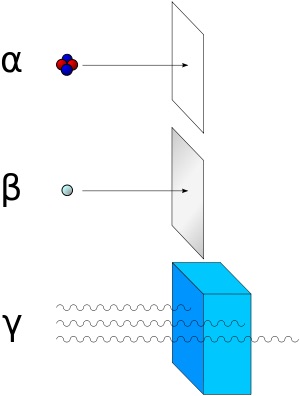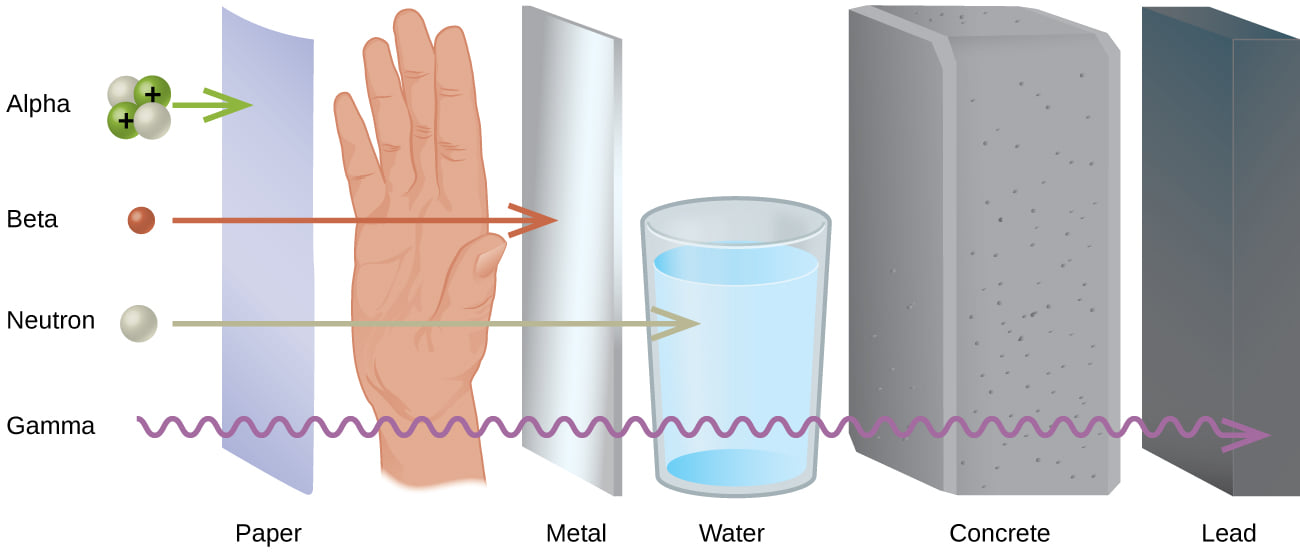
Alpha radiation consists of helium nuclei and is readily stopped by a sheet of paper. Beta radiation, consisting of electrons or positrons, is halted by an aluminum plate. Gamma radiation is dampened by lead.
A beta particle, sometimes called beta ray, denoted by the lower-case Greek letter beta (?), is a high-energy, high-speed electron or positron emitted in the radioactive decay of an atomic nucleus, such as a potassium-40 nucleus, in the process of beta decay. Two forms of beta decay, ?? and ?+, respectively produce electrons and positrons. Beta particles are a type of ionizing radiation. Wikipedia, Beta Particle

Russell
"The reverse of this principle applies in depolarizing bodies. Depolarizing bodies on the radioactive half of any cycle project time accumulations from them at tremendous speeds. Helium and other inert gases explode outwardly from tungsten at approximately half the "speed of light" while similar "rays" explode outwardly from radium, actinium, thorium, uranium and uridium at almost the speed of light.
Conversely, generoactive rays explode inwardly at tremendous speeds in the first three invisible octaves. Alpha, beta, gamma and "cosmic" rays explode inwardly to center invisible generating matter as they and the older inert gases explode outwardly from degenerating visible matter." [Walter Russell, A New Concept of the Universe, pages 112-117]
See Also
Alpha Particle
Cosmic Rays
Figure 9.14 - Wave Flow and Phase as function of Particle Rotation
Figure 9.15 - Wave Flow and Wave Length as function of Particle Oscillatory Rotation
gamma rays
God Particle
K particle
No particles in nucleus - Russell
particle
particle of matter
particle physics
Particles and Corpuscles
standard model elementary particles
Table of Quantum Particles
ultimate particle of Creation
